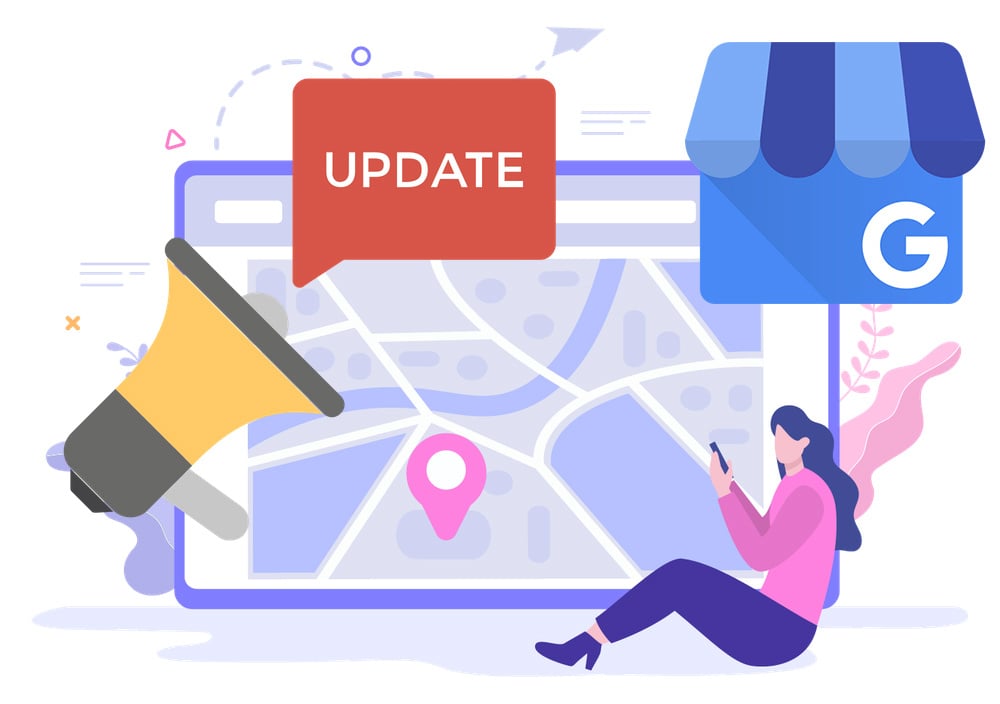Website Management 101 for the Busy Business Owner
As a business owner, you probably can't dedicate too many hours to your website. Learn the basics on how to build, manage, and update your website in eight easy steps.

Between taking customer calls, processing payroll, sending payment reminders, and providing high-quality services for your clients, who has time to manage a website?
However, one of the many things COVID-19 has taught us is that having a digitally optimized storefront for your small business is a must to survive and make a profit in today’s world.
Unfortunately, website management often requires specific skills that many don’t possess or have the time to learn. This makes the task quite intimidating for small business owners and often leads them to pay a high price tag to hire an agency that will manage certain aspects of their site.
To help you determine your site’s needs and keep you from paying for unnecessary services, below we guide you through the basics of how to manage your website. From hiring the right skill sets to choosing a best website builder for small business, we’ve got you covered.
1. Determine Your Needs

To be effective, your site should have a few basic features and pieces of content.
Essential and common website features include:
- A domain name.
- “About Us” and “Contact Us” pages.
- Call to action (CTA) buttons.
- Booking functionality or product pages.
- A blog.
- Clean design and relevant images.
- A testimonials page.
- A menu and search functionality.
- Links to social media channels.
- A chat box.
Whether you have a website already or not, knowing the features required to make your business a success, will help you figure out the type of skills you’ll need to find in a potential employee, freelancer, or agency. It can also help you discover whether or not you can manage some of these features yourself.
2. Find the Right Web Builder
First and foremost, you need to build your website. Paying someone to build your website from scratch can be very expensive. Luckily, best website builder for small business often offer a drag-and-drop functionality which can make building your website a breeze.
They can also help you with hosting as well as maintenance, backups, and analytics of your site. Be sure to find a web builder that offers plenty of customizable themes, allows you to own your domain, and is flexible enough to make any necessary changes as your business grows.
3. Prioritize UX and SEO

A beautiful website that can’t be found online is a waste of money and time. Similarly, a website that appears at the top of search results but doesn’t provide a good user experience can lead to a high bounce rate, low conversions, and unsatisfied customers.
In fact, research shows that for every $1 invested in user-experience (UX) design, businesses see a return of $100 or 9,900% in ROI. When it comes to search engine optimization (SEO), 92% of consumer traffic is awarded to businesses who appear on page one of Google.
With those two statistics in mind, it’s easy to see why you should focus on optimizing your site for both the user and search engines. If UX and SEO aren’t in your wheelhouse and you’re not sure if your site is UX- and SEO-friendly, consider hiring freelancers.
A designer who specializes in UX can help you determine the changes your site needs to lead potential customers further down the funnel. And an SEO specialist can help improve the searchability of your site and hopefully gain new customers organically.
4. Optimize for Mobile
Over the course of two years, Google reported a 900% increase in local mobile searches for “___ near me.” As a small business owner, you want your business to appear in the top results for that search.
Since a good portion of your customers will find you on mobile, your site should look just as good or even better on their phones than on a desktop. Again, a UX designer or good site builder can help ensure that your site is mobile-optimized.
With so many people managing their to-dos from their phones now, you also want to provide additional mobile-friendly options including one-click contactless payment, messaging, and scheduling software for business.
5. Find Resources

Now that you know what your site needs, you’re ready to find the right resources and help. With your budget in mind, determine the top priorities for your site. Whether it’s ranking on Google, keeping an up-to-date blog, improving your CTA clicks, or improving the aesthetics, focusing on one to two goals at a time can help the task seem a little less intimidating.
Once you know those main goals, figure out if you, one of your employees, or even a family member has the skill set and bandwidth to tackle some of these tasks. If not, look into freelancers or search for agencies that offer affordable packages.
Your local small business association is also a good place to inquire about web management resources and tools available to you.
6. Establish a Cadence
Frequently posting fresh content can help you appear active online to both potential clients and search engines.
Adding recent photos of past work, customer testimonials, promotions, blog posts, and answering chat box messages promptly are great, easy ways to build trust and let your customers know you’re responsive and attentive to their needs.
As part of your team’s day-to-day tasks, establish a cadence to update and keep tabs on these sections of your website. A good tip is to connect your social media feed to your site and repurpose content for your site’s visitors.
7. Monitor Frequently

In addition to updating content, you also want to check for things that may be affecting the performance or security of your site. Set a reminder on your calendar—ideally every three months—to check for any broken links or CTAs, loading speed, unused plugins or themes, and outdated information.
Insert a plugin to automatically run security reports on your site and keep you notified of any potential issues. You’ll also want to ensure your site is frequently backed up and your backups are properly stored and saved.
To monitor any downward or upward trends in site traffic, we recommend using a free analytics tool like Google Analytics.
8. Edit As Needed
Lastly, it’s important to remember the online world is always changing—what works today may not necessarily work tomorrow. Being adaptable and open to change when it comes to your website is key to maintaining sustainable success online.
Make edits and changes as you see fit and keep basic information up-to-date, including your copyright, hours of operation, and contact information.
Pro-Tip: To help with brand awareness and recognition, don’t forget to match your site’s branding and design to other business items and materials like business cards, online ads, direct mail, flyers, etc.
Are you ready to optimize your presence online and offer your clients the latest in digital and mobile-friendly functionalities? Get started by downloading our guide to must-have website (and social media) trends below!
%20(1)%20(1).png?width=340&name=Group%2012%20(2)%20(1)%20(1).png)



